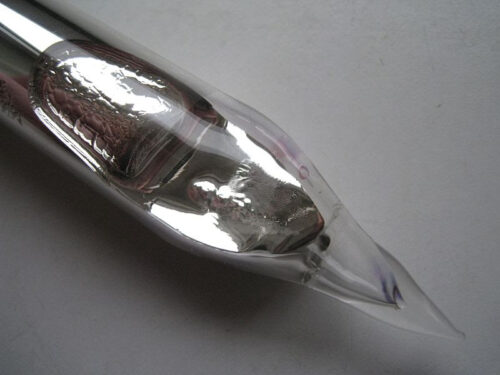Unfortunately for fans of The Hitchhiker’s Guide to the Galaxy, the answer to life, the universe, and everything is not forty-two.
It’s actually closer to 1/137.
This “magic number,” as physicist Richard Feynman puts it, approaches the value of the fine structure constant ?, a dimensionless constant that specifies the strength of interactions between electromagnetic forces and charged elementary particles, such as electrons or muons. It’s a number that necessitates precision. In fact, according to astrophysicist Biman Nath, if the fine structure constant was even four percent smaller or larger, stars would be incapable of sustaining the nuclear reactions that ultimately create carbon-based life as we know it.
The constant is a critical component in predicting the Standard Model of particle physics, a theory created in the 1970s that describes the interactions between fundamental particles and therefore describes the basic laws of physics. The Standard Model can predict a property of the electron—its magnetic moment—with high accuracy, which is measured very well experimentally. However, to compare the measurement and the theory, the fine structure constant’s value is needed, as it is a parameter of the theory. The comparison between measurement and theory could result in a difference between the two—a discrepancy that could point to potentially new physics, or new particles that we haven’t seen yet.
Researchers Saida Guellati-Khelifa and Pierre Cladé in the Kastler Brossel Laboratory (the LKB) in Paris have made the most precise measurement of this constant to an astonishing eleven decimal points: 1/137.035999206, with a relative accuracy of eighty-one parts per trillion. The precision is almost unbelievable—this value is three times more precise than the previous most precise measurement of the constant, which was measured by the Müller group at University of California, Berkeley.
Using a specially designed set up, the LKB calculated ? using the recoil velocity of the rubidium atoms when absorbing a photon. This velocity measurement relates directly to the mass of the rubidium atoms, which is the limiting factor when calculating high precision values of ?.
They began with cooling the rubidium atoms with lasers. “If we reduce the velocity distribution, we enhance the wave behavior of the matter,” Guellati-Khelifa said. Clear wave behavior is critical to observing the wave patterns—atomic fringes—that are the key to measuring the recoil velocity. These atoms were launched into an atomic elevator, essentially a vacuum chamber that the researchers used to position the atoms and cancel out factors as significant as gravity or the Earth’s rotation, which could affect their velocity measurements.
Here’s where it gets a little insane. The LKB chose atoms that would occupy two stable atomic levels. They used lasers to “split” the atom wave packet in half and created a superposition between those two levels; one half would remain with a velocity of zero, while the other that was prepared into the second atomic level would gain recoil velocity. A split second later, they would use another laser pulse to recombine these atomic halves or wave packets into one. They measured the phase shift between these two different wave patterns to determine the recoil velocity and therefore determine the rubidium atom mass needed to calculate the fine structure constant.
The LKB found that their measurement of the fine structure constant was in better agreement with the experimental value of the Standard Model than any before. Effectively, it places limitations on the structure of electrons. Moreover, it sets the stage for potentially new physics, though the team is excitedly waiting on results of a similar experiment with the muon, which—if it has a similar discrepancy as their results—could provide the basis for new physics or a new particle. In the meantime, they will continue improving their measurement of the fine structure constant. Dr. Cladé projected that they might change the isotope of rubidium from Rb-87 to Rb-85 to check their measurements as well as for systematic effects, as well as cool the atomic cloud to ten or even one hundred times smaller to check the measurement even further.
When asked what her favorite part of the experiment was, Guellati immediately displayed the graphs of the atomic fringes found from the wave patterns. “When we started the project, it was my third version. It’s exactly like a clockmaker, a very high technology clockmaker. You have to control everything. And what was most exciting was when we first observed the most beautiful atomic fringes in the world. When you see these measurements, you think, ah, my clock worked very precisely,” Guellati said.

